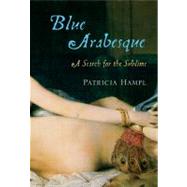
| A excerpt from what we call Blue Arabesque | |
| appeared in Granta Fall 2004 and was later was selected and reprinted for Best American | |
| Spiritual Writing 2005 Houghton Mifflin | |
| The American Scholar a version of the Katherine | |
| Mansfield chapter under title of ""Relics of | |
| Summer 2001. That version also appeared in Rereading edited | |
| Table of Contents provided by Publisher. All Rights Reserved. |
The New copy of this book will include any supplemental materials advertised. Please check the title of the book to determine if it should include any access cards, study guides, lab manuals, CDs, etc.
The Used, Rental and eBook copies of this book are not guaranteed to include any supplemental materials. Typically, only the book itself is included. This is true even if the title states it includes any access cards, study guides, lab manuals, CDs, etc.
Excerpted from Blue Arabesque: A Search for the Sublime by Patricia Hampl
All rights reserved by the original copyright owners. Excerpts are provided for display purposes only and may not be reproduced, reprinted or distributed without the written permission of the publisher.